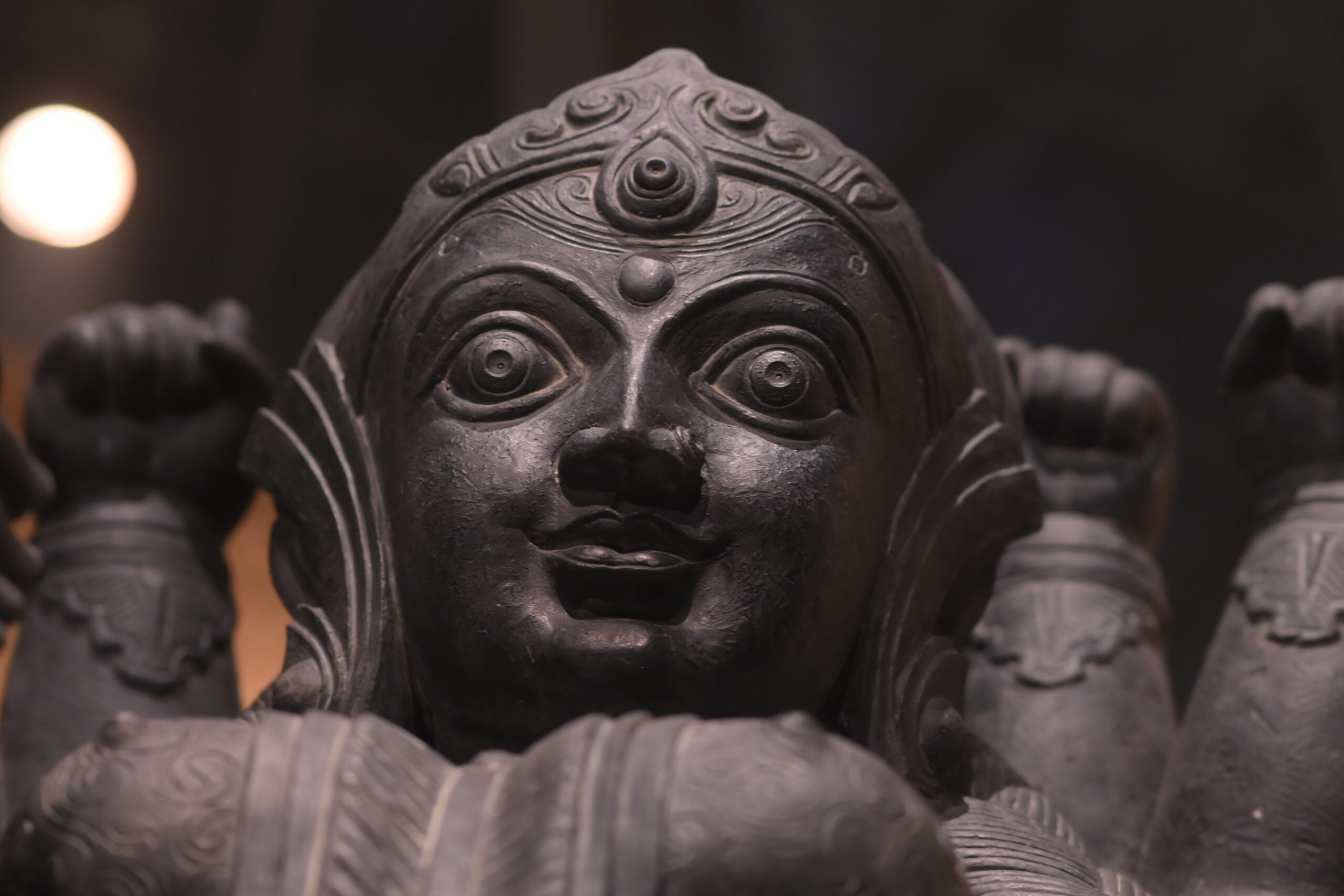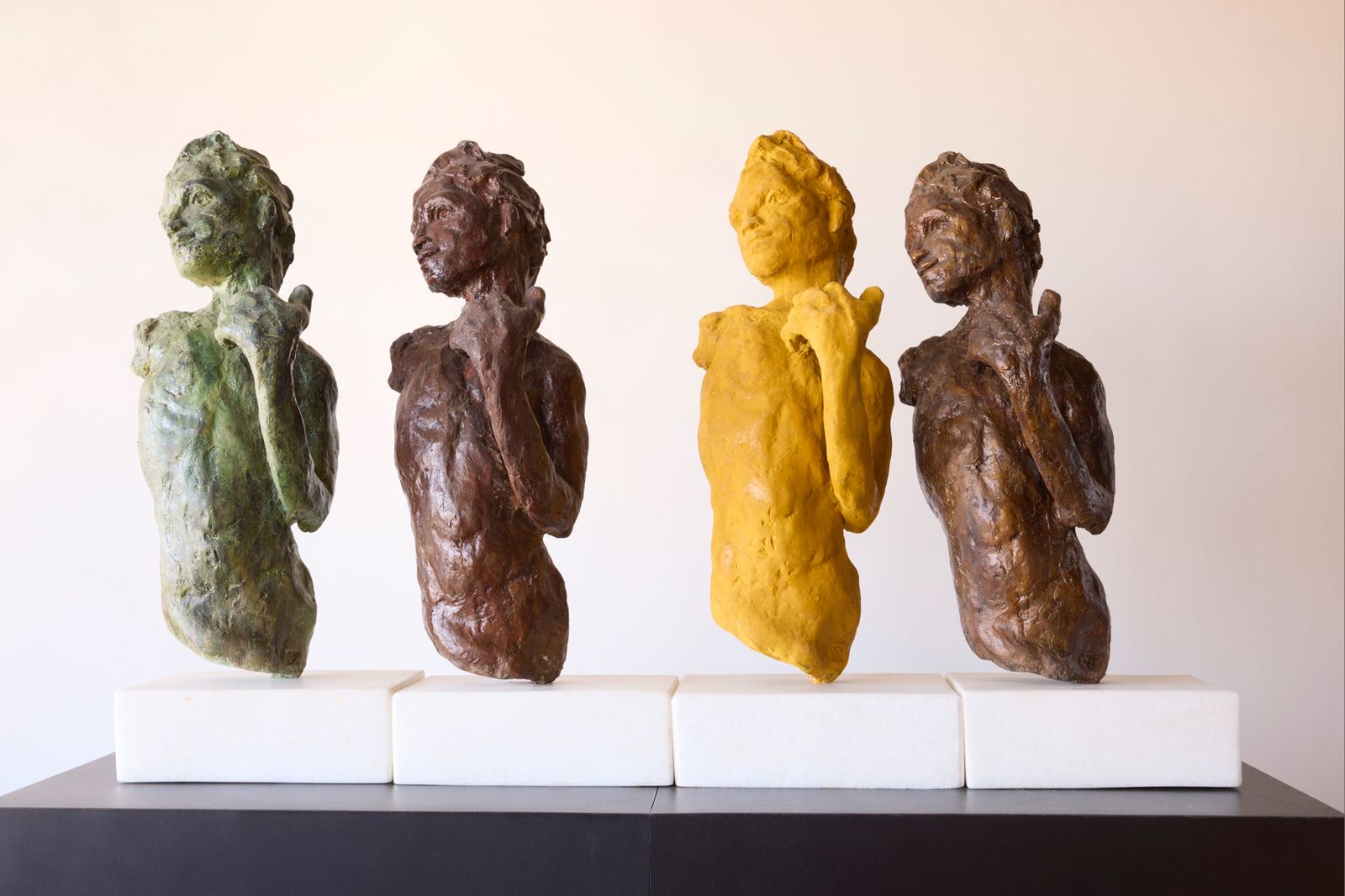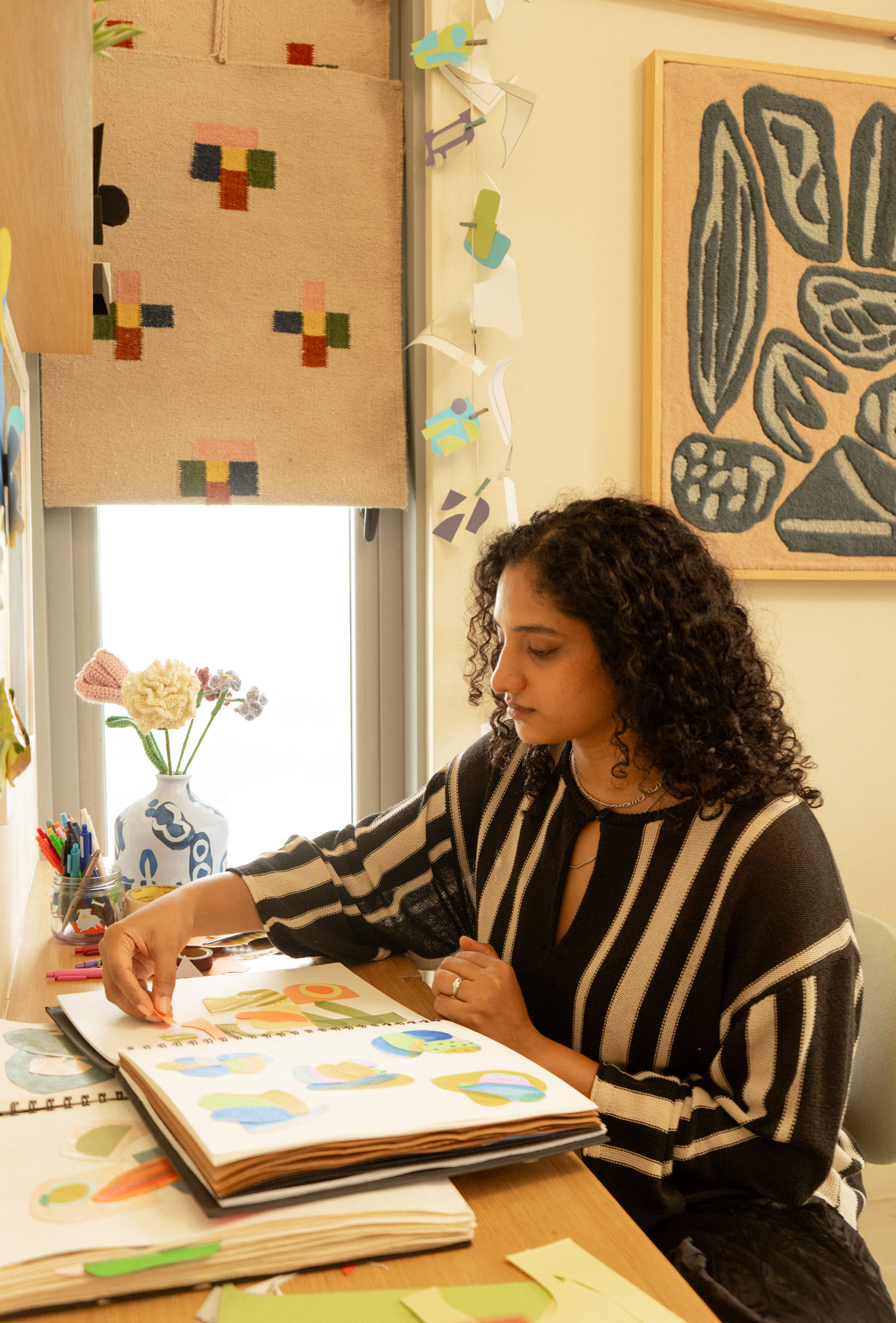We met Sahil Naik for his recent show Monuments, Mausoleums, Memorials and Modernism at Experimenter, Hindustan Road. His second solo show at the gallery is an ode to his previous solo exhibition Ground Zero: Site as Witness/ Architecture as Evidence that discusses the role architecture plays as a mute spectator to the politics and terror of its time. Picking up from where he left off, Naik speaks to us about the myriad influences that permeated his work since his recent residency at Aomori Contemporary Arts Center in Japan, the work he has been doing with the inhabitants of the Curdi village in Goa, and how he breathes life into his near-perfect architectural models seen in the show.
Art Fervour discovers more about Naik’s art and antics in this detailed interview on his practice, process, pursuit and more.
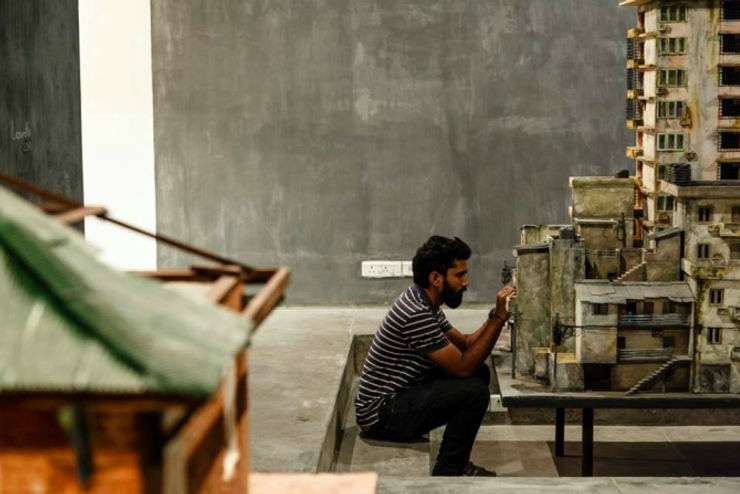
AF : It is said that we are all a product of our history. Is there something in your childhood or in your adult life that has encouraged you to take to sculpting and architecture?
SN : I’m drawn to built environments for many reasons. I grew up in town with Christian, Hindu, Islamic and Modern architectural styles that have over the decades influenced each other. The Shantadurga Temple, the 16th century Safa Shahouri Mosque or the town plan of Ponda city – the diversity and/or assimilation of style and material has had my interest. Sculpture came to me more organically. It offered me the possibility to return to detail, exercise a fidelity to material and examine time onto the physical surface. These aspects were going to become key to my practice and its interest in the evidentiary potential of architecture. I am also influenced by many histories – those documented, compromised or forgotten. For example, more recently I’ve been working with the village of Curdi in Goa. In the 1960s, the villagers were relocated and the area was claimed by the state to build a modernist dam. The village stays submerged most part of the year since then, only to resurface in the summer for two months. Every year several villagers return to see their homes, broken with time and water, but still existing. To me there are many things here – collective recollection, preservation and an estimation/examination of intangible loss.
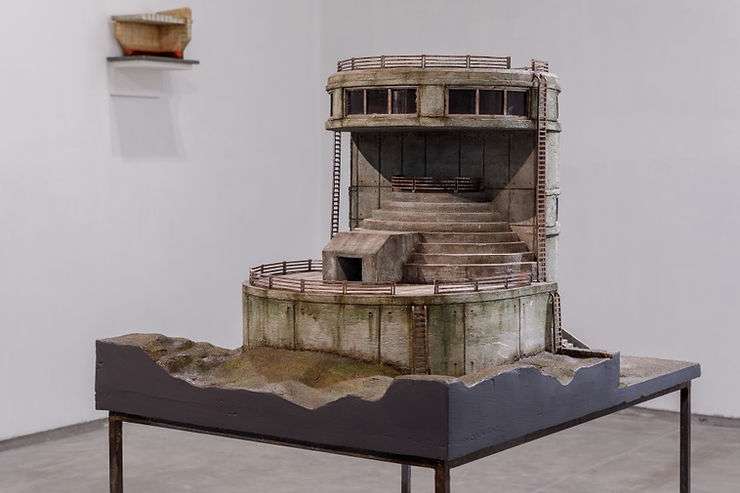
AF : You have been a part of Khoj International Artists Association and the Peers Emerging Artist Residency. How have these residencies helped you with your artistic practice and your personal growth?
SN : My time at Khoj International Artists’ Association has been crucial in many ways. When a group of diverse practitioners come together there is a lot of learn and unlearn. Above that it also matters that you are in spaces that encourage you to take risks or do something you wouldn’t do otherwise. There is a lot we learn from our Peers and it’s something I have come to value immensely. I think my time at Aomori Contemporary Arts Center in Japan was also incredibly crucial to my current project. Much of what forms Monuments, Mausoleums, Memorials, Modernism was conceived there. I think it is impossible to separate artistic practice or any practice for that matter from our immediate ecologies and the world at large – nothing is thought or created in isolation – it is created in collective thought and action, in disagreement and dissent, in resistance.
AF : Your debut solo exhibition ‘Ground Zero: Site as Witness/ Architecture as Evidence’ at Experimenter had delved into how architecture stands as a mute spectator/ witness to the politics and poetics of terror of our times. In the current political scenario, where history is getting remodified and erased, how does your current exhibition ‘Monuments, Mausoleums, Memorials, Modernism’ respond to it?
SN : To me Ground Zero and Monuments, Mausoleums, Memorials, Modernism are connected in more ways than one. To begin with, I do not think architecture is a mute spectator – it is in fact capable of taking a witness position or providing evidence. Every crack, condition and object can offer clues. Ground Zero in that sense thought a lot about these tangible and intangible clues and how they may help us understand time and incident. I was also very interested in understanding narrative possibility of an incident – the way people spoke about it, the different ways in which it was recorded or the stories that were built around it. Monuments, Mausoleums, Memorials, Modernism, on the other hand, examines the state’s relationship to her citizens through architecture. It thinks through dominant state narratives and hopes to contest that with public memory and lived histories. I think it is all the more important to foreground these in times like today where everything is being altered to benefit those in power. There is a concentrated effort to compromise law, rights and minority/marginal histories.
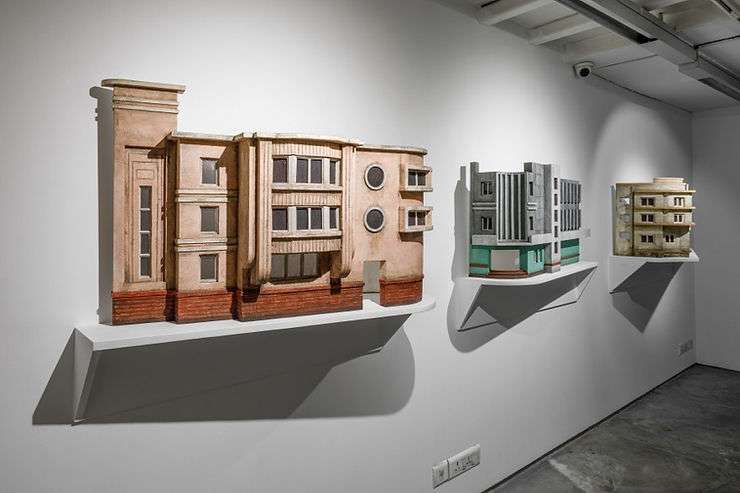
AF : The nation as Partha Chatterjee questions, ‘Whose Imagined Community’ is it and argues that it is imagined into existence by a fellow group of people sharing the same history and cannot be only understood just in terms of geo-political boundaries. But this history gets tampered by different power blocks in the country. Through your architectural works are you trying to address how this ‘imagination’ continues to be manipulated by the government(s) in our nation and also broadly in South Asia? How are you responding to these ongoing changes through your art?
SN : We are already seeing this around us, how dominant ideologies or histories are constantly othering entire communities or working towards creating exclusionary structures, laws and modes. We are unfortunately stuck to geo-political and societal boundaries because that is what the regime peddles, promises. This imagination to me is demonstrated in public infrastructure as well, and I speak beyond the statues and memorials and naming of roads. It is also beyond heritage politics and archaeological endeavors. Of course, all of these also contribute to this vision, this ideology, but we must be vigilant because it has entered our everyday lives. We see this in education for example, or in how our community or recreational spaces are being remodeled, developed. MMMM for me is a multi-year project for many reasons. I think there is a lot to think about, excavate and preserve. While this particular exhibition at Experimenter, which I see as an essay thinks through the obsession to memorialize on one hand and places it direct juxtaposition with the common (public housing and public infrastructure) almost like weighing what’s worth. It amuses me how we build, why we build and what its larger function. These are also called propositions because that’s the rate at which structures are being peddled to concretize a ‘specific’ history. It is also funny that this is where we are headed and this is what the regime is interested in.
AF : You have spoken about your interest in mythology in your previous interviews. Do you feel, your growing up in Ponda, Goa and your inclination towards mythology inform your works?
SN : My interest in mythology comes from growing up in a Goa where storytelling and oral histories are a way of life. Oral histories, public memory, stories and anecdotes constantly appear within my work and research. To me, every history that is not the state’s version is being consistently marginalized and endangered. With these, we lose records of language, culture, strategies and a way of life. These are of no use to the capitalist-political lobby and therefore dispensable. To claim land and resources for extraction, its inhabitants must be dispossessed; their claim to the land must be invalidated. To do this, their history must be erased. Since most of these histories are oral, it becomes all the more important to record them – this is perhaps the only way to resist. Here is where mythologies, stories, songs, recipes, strategies and methods become important. I have grown up seeing a lot of this in Goa and to me, it is very important to preserve and in a way safeguard our vulnerable histories.
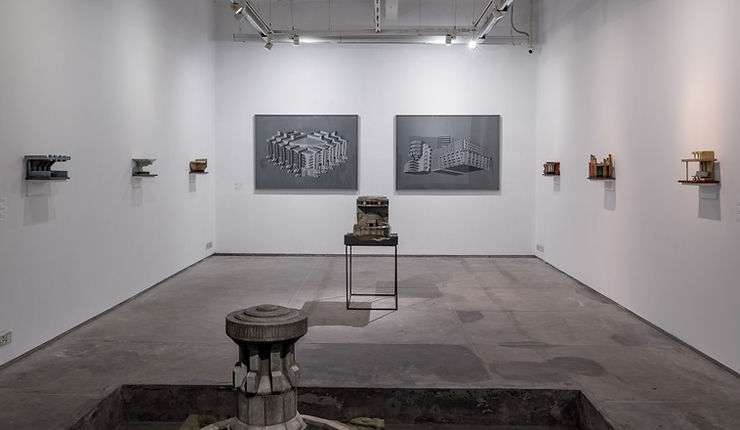
AF : Urban planning has been a reflection of the particular political regime in which it is situated. What are your thoughts on this? What is your stance on ‘architectural ruins’ that has become a byproduct of nation-building and an unavoidable process of re-telling of history?
SN : I feel this is where MMMM really begins, between the citizen and the ambition of the nation mediated by those in power. Nehruvian Modernism to me for example, fails in its capacity to build at a pace that was commensurate to the numbers of refugees coming in. In its aesthetic ambition and was also an unequal distribution of basic resources. I say this very specifically with respect to public housing. Having said that public infrastructure besides housing though slow, was constructed keeping the citizen in mind, almost like it was meant to train the citizen to perform in a certain way. I am particularly referencing educational, recreational and economic infrastructure – schools, nationalized cooperatives, banks, museums, schools, community spaces and parks amongst others. Coming to where we are today, where the current government’s idea of development is reconstructing – we are caught in a war of legacy politics and erasure that affects the citizen in a major way. Structures which could very well qualify as modern heritage and were built keeping conditions like climate, functionality and the people that will use it in mind, are being razed to the ground to rebuild. This is alarming also in terms of how this reassignment of history is also eliciting a form of violence and erasure.
AF : Do you feel architecture is to be understood as a political tool and not just in isolation?
SN: Architecture has always been inseparable from politics and does not exist by itself. It has a function to regulates and in a way train us to perform citizenship. It inculcates a culture, a structure and a way of operating in the nation-state and how we negotiate the public. On another count architecture is also the most visible aspect of development. It demonstrates a kind of up to date, modern façade. Everything from grand burial mounds to the catholic church to public sculptures was envisaged as expressions of power. Albert Speer’s Berlin, Israeli architecture in Palestine, and the efforts to bring “social improvement” through public housing in the 60s and 70s were all politically motivated. The mundane aspects of architecture and planning are consciously drafted as tactical apparatus for state-strategy.
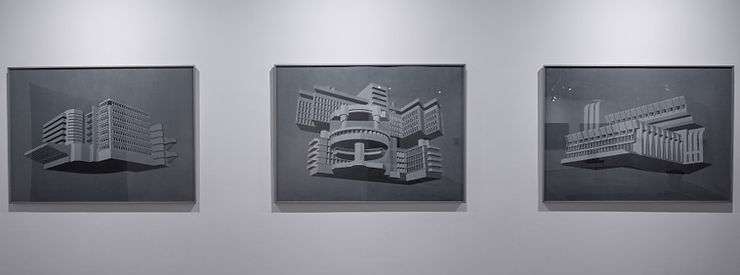
AF : Could you share with us the process in which you breathe life into your works – the sculptures especially?
SN : The sculptures always come last. I spend a large part of my time studying structures, constructing images, sifting through archival material and prototyping. This allows me to draw diverse interpretations and create points of interest which eventually informs the work. In this exercise, my attempt is to complicate history through failures, gaps and fissures. This comes together first as a flow chart or a mind map of ideas, observations and facts/stories I find interesting. It is from here that I start building the sculpture, one surface at a time. I think the challenge is how does one embed these notes on to the surface and this is what I am really trying to do with the sculptures. I am also very conscious about fidelity to actual material and marking time on it. Once the many materials are readied from a tiny brick to concrete casts, they are aged in many ways before they are built into the sculpture.
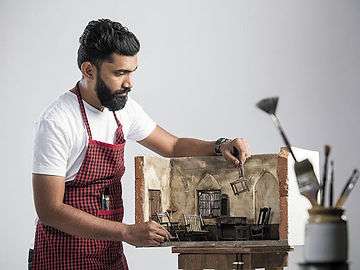
AF : Out of your present series, which piece of work would remain your favorite? And why?
SN : I think studying and creating the bus queue shelters was an incredibly fun exercise. I traveled a fair bit through tier two cities to study these. It was also fascinating how people remembered these shelters by their colour or “design”. Most of these structures were built in the 70s, 80s, and 90s with Random Rubble Masonry and had stood the test of time. The city had also grown around it in a way condensing its structural impact and imagination. My first instinct was to isolate it, separate it from the visual noise of the city that had now enveloped it densely. Several of these structures are in use and function like temporary community spaces, where people in waiting come together.
The exhibition, Monuments, Mausoleums, Memorials, Modernism is on view till February 25 at Experimenter, Hindustan Road in Kolkata. Visit the gallery to see and experience the powerfully layered show by Sahil Naik. Visit our website to know about Experimenter’s upcoming shows and those around your city.
